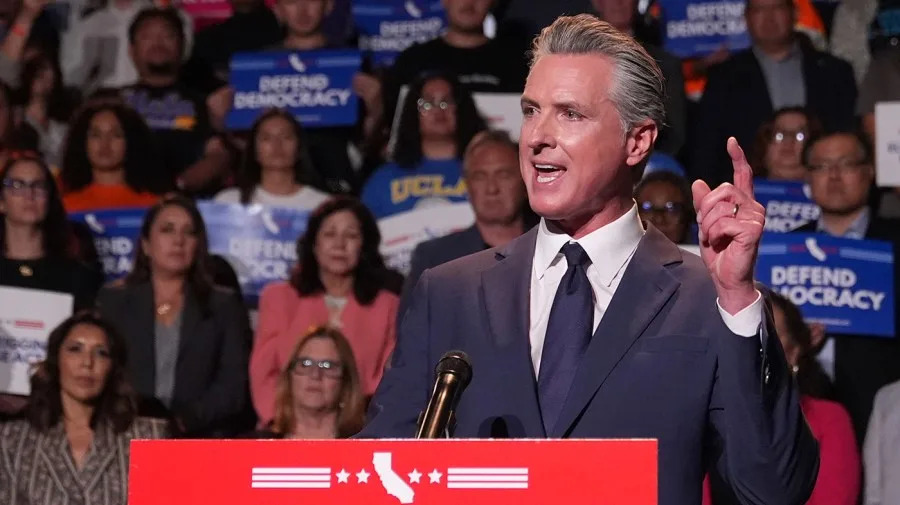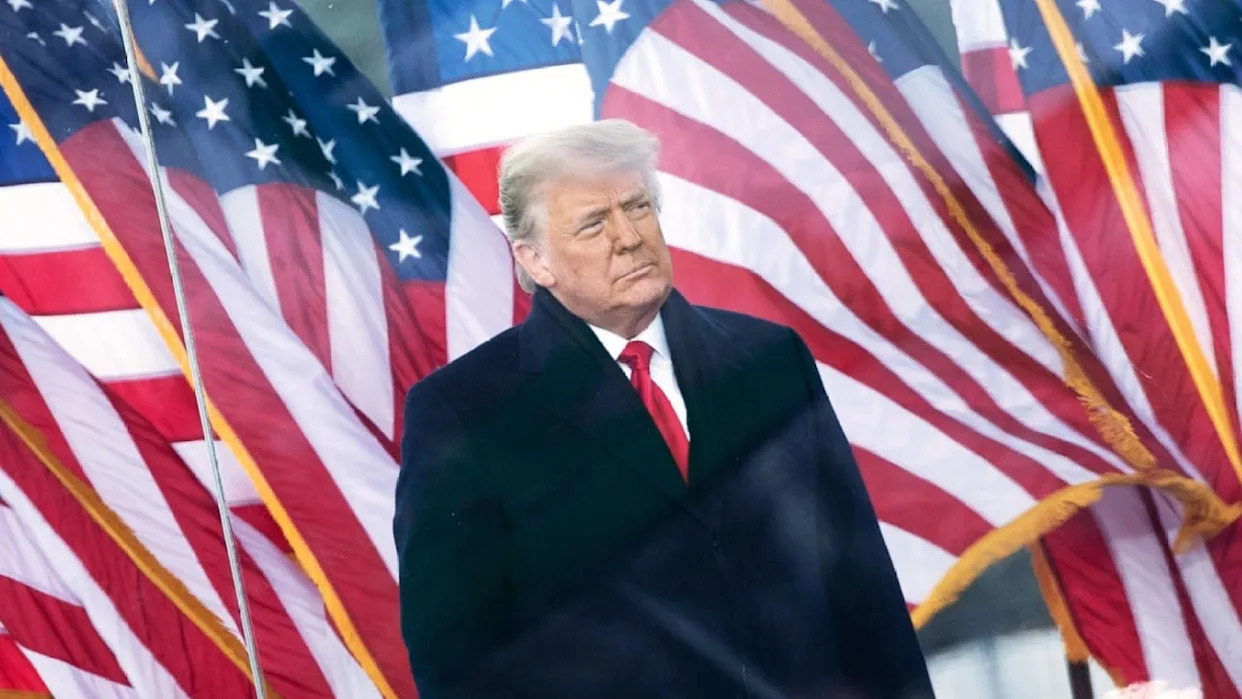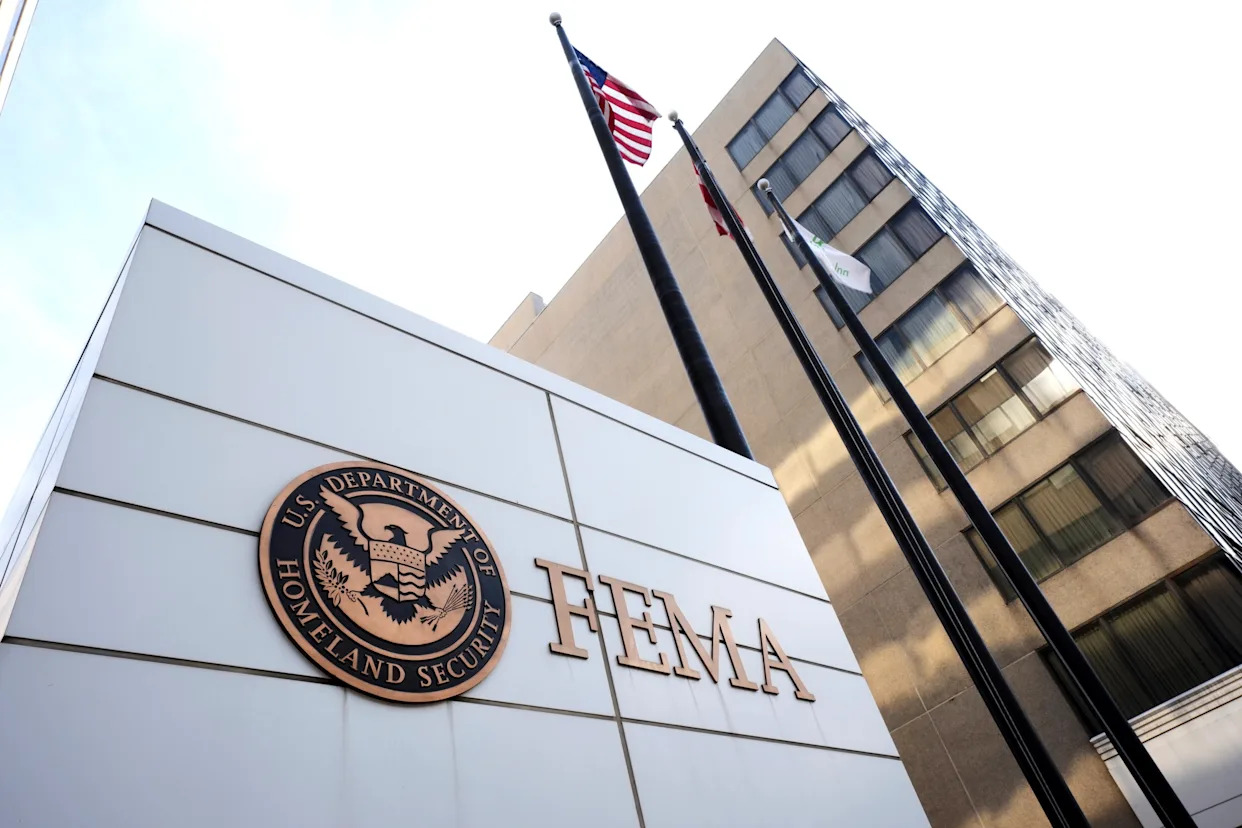President Donald Trump’s quest to expand his power has moved to the marble corridors of the Federal Reserve, an institution once considered politically and legally off-limits.
It will almost inevitably land at another marbled institution: the Supreme Court.
The conservative justices who hold a majority on the court have provided only a few Delphic signals about how they view the president’s authority to fire board members of the Fed. Just three months ago, the justices obliquely suggested that the Fed — unlike other executive branch agencies — should retain some degree of independence from the president.
But Trump is betting the court won’t second-guess his decision on Monday to fire board member Lisa Cook “for cause.” That might be a good bet, legal experts said Tuesday. Judges — including Supreme Court justices — may be reluctant to overturn a president’s subjective conclusion about what counts as an acceptable “cause,” or legal basis, for a firing.
In this case, the purported basis is an unproven allegation that Cook lied on a mortgage application — even though Trump’s true motive likely is his frustration that the Fed has not lowered interest rates.
“The firing of Lisa Cook ‘for cause’ may be pretextual, but is not obviously illegal,” said Harvard Law professor and former Justice Department official Jack Goldsmith, in a recent post on X.
And if the courts take a hands-off approach, any pushback will have to come through other channels, namely political pressure from Congress or feedback from the financial markets.
“Given this judicial hesitancy, the question going forward will be the extent to which politics — and the markets — can serve as a meaningful check,” said Jennifer Nou, a University of Chicago expert in administrative law and the separation of powers.
Political backlash may be a tall order in a GOP-dominated Washington, where Republican lawmakers have leap-frogged each other to show deference to Trump. The economic response to Trump’s move is more unclear, but so far it has been tepid.
In the meantime, a fast-moving legal battle is all but guaranteed. Cook — who said in a statement she is “gathering the accurate information to answer any legitimate questions” about her mortgage history — has vowed to challenge the firing in court and is expected to file her lawsuit imminently. She’s being represented by Abbe Lowell, a veteran white-collar attorney who also represents Hunter Biden and several other officials fired by Trump’s appointees. Lowell also once represented Trump’s daughter Ivanka and son-in-law Jared Kushner.
A vague Supreme Court signal
Key to the legal tea-leaf reading is a two-page, unsigned decision the Supreme Court issued in May allowing the president to fire two members of labor-related federal boards. In that decision, the court’s conservative majority emphasized the Federal Reserve should be viewed differently from other purportedly independent agencies housed within the executive branch.
“The Federal Reserve is a uniquely structured, quasi-private entity that follows in the distinct historical tradition of the First and Second Banks of the United States,” the high court wrote.
That cryptic line was widely seen as an important caveat to the Supreme Court’s recent pattern of expanding Trump’s firing power. The court has largely permitted the president to summarily remove the leaders of regulatory agencies without providing any reason, even leaders who are protected under federal law from discretionary firings.
But the Fed, the court seemed to be signaling in May, is special. The implication was that the justices might not allow Trump to unilaterally oust its board members for no reason other than exerting political control over monetary policy.
In a dissent to the court’s ruling, Justice Elena Kagan criticized her conservative colleagues for being inconsistent.
“The Federal Reserve’s independence rests on the same constitutional and analytic foundations as” other historically independent agencies, like the National Labor Relations Board, the Federal Trade Commission and the Federal Communications Commission, Kagan wrote. The court’s two other liberal justices, Sonia Sotomayor and Ketanji Brown Jackson, joined her dissent.
It’s unclear, however, how much the court’s discussion about agency independence will affect the outcome of Cook’s lawsuit. That’s because, unlike the leaders of other agencies whom Trump has fired without giving a reason, Trump did provide a reason for firing Cook.
The president might therefore argue in the litigation that he has complied with the relevant statute, which authorizes the president to remove Fed board members only for “for cause.” That term has typically been understood to mean severe misconduct or malfeasance.
The mortgage-fraud allegation against Cook might not meet the traditional understanding of “cause,” especially because Cook has not been charged with any crime, let alone convicted. The allegation was made by Trump’s handpicked appointee to lead the Federal Housing Finance Agency, who has repeatedly attacked Trump’s political rivals and leveled fraud allegations against a growing list of his detractors.
But in the face of a vague statutory term like “for cause,” courts might defer to the president’s view of what counts as misconduct.
One expert on interbranch legal disputes said he wouldn’t bet on the Supreme Court blocking the firing.
“Congress is supine, and the courts are anxiety ridden,” said Stanley Brand, a former House counsel who now teaches at Penn State’s Dickinson Law School. “So, where's the check? There isn't any, right?”
Unitary executive implications
Another factor in the legal analysis is the Supreme Court’s recent embrace of the so-called unitary executive theory, which holds that presidents are entitled to sweeping control over executive branch agencies — and in particular over agency officials in positions to set policy.
Under that approach, there seems to be little doubt that Cook and the other Federal Reserve governors have broad policymaking authority. Indeed, Trump’s key grievance against Cook, Federal Reserve Board Chair Jerome Powell and others is that they are not using their power to lower interest rates.
“Trump may actually be stronger here than he is with tariffs or any of these other things that he’s doing,” Brand said. “If Congress creates an agency that he appoints, then it seems to me that theory establishes his authority to fire and hire.”
The members of the Fed board are appointed by the president and confirmed by the Senate for staggered 14-year terms. Cook was appointed by Joe Biden in 2022.
In Brand’s view, the Supreme Court could be more reluctant to bless a firing based on alleged misconduct than one based simply on political or policy disagreement.
“There has been no adjudication of her culpability in terms of the central allegation that she filed misleading mortgage applications,” he said. “It seems to me, even if the court goes full in on the Fed being an executive agency, what are they going to say about the ability to just fire someone without any process at all?”
In general, courts are not allergic to examining firing decisions to determine whether they are based on pretext or made for the stated reason. Courts all over the country do that every day in discrimination cases filed against the federal government, state government and private employers. But they’re rarely asked to undertake such a task in connection with a dismissed presidential political appointee.
“This Court will indeed be mindful of separation-of-powers concerns when second-guessing personnel decisions of the president,” Nou said. “As a result, they may be more comfortable imposing some more process before cause-related firings relative to weighing in the substance.”
Trump’s true target
Trump allies say the attempted firing of Cook is a test case for Trump’s true design: firing Powell. If he can win the legal fight against Cook, they say, it may embolden him to go after Powell next.
“It’s a shot over the bow that says [to Powell], ‘We’ve got cause on you too,” said Sean Spicer, Trump’s former White House press secretary who was the subject of an earlier legal fight over his removal from a presidential commission by Biden. “This is the proof of concept. It’s showing, ‘Hey look, we can do it, here’s the standard.’’
Megan Messerly contributed to this report.





Comments